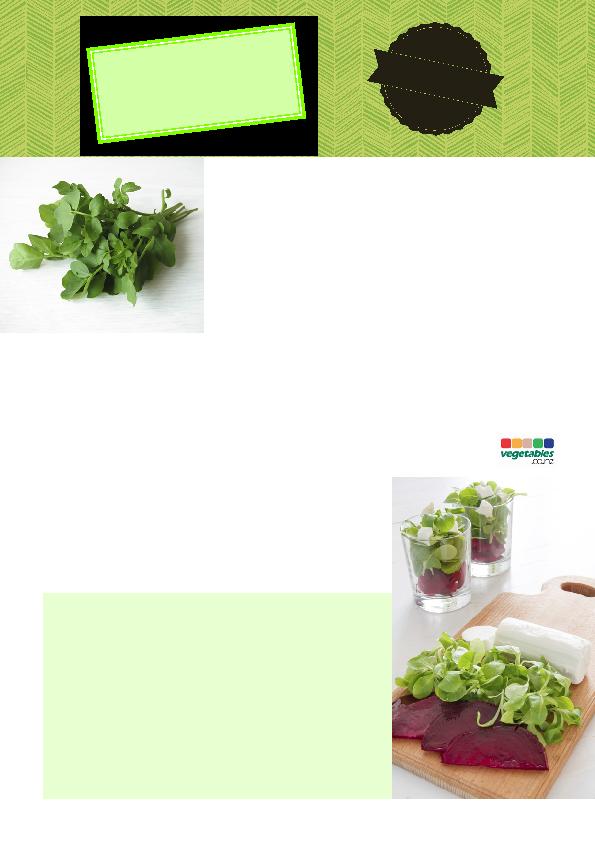
in streams and ditches; but now it is
available commercially. It has rapidly
become a firm favourite on many
chefs' menus. The dark green leaves
have a peppery flavour and can be
eaten raw in salads and sandwiches,
used as a garnish, added to juices,
soups and sauces . It can also be
used as an alternative to spinach in
omelets, quiches and crepe fillings.
of vitamin A, vitamin C and
folate. Glucosinolates are the
phytochemicals in watercress that
including carcinogen detoxification
and antioxidant properties.
stems. The leaves should be green,
with no yellowing or wilting. Prepare
by rinsing and removing any woody
stalks and yellow leaves. Use thin
stalks in dishes and add thicker stalks
to stocks and soups. Watercress is
available all year round and is most
plentiful from May to November which
makes it ideal to include on winter
menus.
chopped watercress, spring onions,
garlic, grated cheddar and a dash of
grated nutmeg.
with a green apple or two kiwifruit and
an orange. Serve chilled.
beetroot and diced goat's cheese
drizzled with a chilli balsamic glaze.
carrot, garlic, chilli and potatoes in
stock; add watercress and a squeeze
of lemon juice. Blend and season.
with coloured capsicum, olive oil,
orange zest and then add chopped
watercress. Serve garnished with
extra watercress leaves and orange
segments.
parmesan, garlic, chilli and pinenuts.
Stir through cooked pasta and serve
with chopped cherry tomatoes, black
olives and picked watercress leaves.
watercress leaves to thick yoghurt
with mayonnaise, chopped shallot and
Dijon mustard with a
dash of white wine.
2 handfuls watercress
1-2 Tbsp crumbly blue cheese
2 Tbsp French dressing
and simmer for 20-30 minutes or until tender. Cool and then peel skin off. Slice
beetroot into cubes or sticks.
French dressing and serve.